- Home
- Eric Flint
1632 Page 4
1632 Read online
Page 4
Hib (Haeamophilus InfluenzaeB), MenC (Neisseria meningitidis) and pneumococcal vaccines are against three different bacteria which cause either encephalitis or meningitis. The vaccines for these diseases may be among the hardest to reproduce. They are made by linking the special sugar groups which the pathogens have in their cell walls to a carrier protein. This combination allows children under the age of two to make, and to continue making, active antibodies against these sugars, which children are not able to do without the carrier protein. There is, however, a possibility of using a whole-cell vaccine again. Whether this would work well enough for the under-two age group is a question they would have to determine the answer to themselves.
DTaP (Diphtheria, Tetanus and acellular Pertussis vaccine) is a difficult case. This is actually a trivalent vaccine, that is, one which protects against three different pathogens by providing corresponding immunogens. The simple aspect would be to create a whole-cell pertussis vaccine. The tougher parts are tetanus and diphtheria. In both tetanus and diphtheria, the bacteria are not targeted, but rather the toxins these bacteria produce. It is the toxins which even in minute quantities damage human cells or nerves and can kill when these bacteria infect people. Usually these bacteria have trouble growing in people because we use oxygen and it is present in our tissues. Both of these two bacteria species are obligate anaerobic bacteria, meaning that they live only under conditions without oxygen. That would make it difficult to culture them without developing some equipment for it first. If that gets done, making the vaccine is relatively easy. The toxins are produced by the bacteria and expelled into the media they are grown in. The bacteria can be filtered out, the toxin inactivated by formaldehyde and the toxoid (inactivated toxin) concentrated. This would be very dangerous because these toxins are extremely deadly.
Other Vaccines
Making a rabies vaccine in a crude form similar to that of Pasteur is not very difficult. It involves infecting a rabbit, letting it get sick and then killing it, extracting the spinal cord, and letting it dry. The drying kills the virus and then bits of this can be injected many times over many days.
The flu vaccine, on the other hand, would be very difficult to produce. It is likely they would choose to go for more readily available and more likely targets first because it requires much more infrastructure to make effective flu vaccines.
Tuberculosis is a major killer. In 1632, it killed three times as many people in London than did smallpox. The current vaccine for tuberculosis is not used in the U.S.A. or Holland, but is employed virtually everywhere else and has been used since 1921. It does not appear to prevent tuberculosis in people but it prevents the most deadly form of the disease in young children about eighty percent of the time. This vaccine is made from bovine (cow) tuberculosis bacterium. When it was originally made by Calmette and Guérin, they weakened this bacterium by continuously culturing it in the lab for thirteen years.
Conclusions
Would people from Grantville use vaccines now that they are back in the 1630s? Personally, I can't see how they couldn't. It would go with their spirit to go out and try to conquer these diseases just as much as they set out to make themselves and their neighbors safe from Tilly's mercenaries. They are already armed with much knowledge: of the scientific method, the germ theory, statistics, epidemiology and even the nature of the enemies they are fighting. They would have it in their own hands. It is a choice to make between living in fear or actively fighting the demon who feeds that fear. Would the vaccines they would develop be as safe as they are now? Not likely. There is just so much less testing that could be possible with what they have. It is very likely that in this process there will be mistakes made and lives lost. But overall, the tally will be so many lives saved, not just in Grantville, but wherever they manage to teach that dying of certain diseases is a choice, not a certainty.
References
The Dutch Republic, Jonathan Israel. Oxford University press. 1995.
Introduction to Bacteria: for students of biology, biotechnology & medicine, Paul Singleton. Chichester; New York: Wiley, 1992. 2nd ed.
When Plague Strikes: the Black Death, Smallpox, AIDS, James Cross Giblin, New York: HarperCollins, 1995.
The Speckled Monster: a historical tale of battling smallpox, Jennifer Lee Carrell. New York: Dutton, 2003.
Vaccines: What You Should Know, Paul A. Offit and Louis M. Bell. New York: Chichester: Wiley, 2003.3rd ed.
Health, Disease and Society in Europe, 1500-1800; A source book, Peter Elmer and Ole Peter Grell eds. Manchester University Press, 2004.
The Conquest of Smallpox, Peter Razzell. Caliban books 1st ed. 1977. 2nd ed. 2003
Online Resources
http://www2.sunysuffolk.edu/westn/people.html, life of the people in the early modern era
http://en.wikipedia.org/wiki/Scientific_method
http://en.wikipedia.org/wiki/Louis_Pasteur http://www.sciencemag.org/cgi/content/summary/291/5512/2323 http://www.medicalnewstoday.com/medicalnews.php?newsid=47385 http://www.sciencemag.org/cgi/content/summary/291/5512/2323, UK vaccination schedule
http://www.dur.ac.uk/anthropology.journal/vol13/iss1/casiday/casiday.html, http://www.cdc.gov/NIP/vacsafe/research/lancet.htm http://www.geocities.com/issues_in_immunization/fearmongers/opposition_to_immunization.htm vaccine scares in the 20th century.
http://www.lrb.co.uk/v26/n13/penn01_.html, fraud and media in causing disruptions in vaccine coverage
Crude Penicillin: Potential and Limitations
by Kim Mackey
"That which we know frequently impedes us in acquiring new knowledge." Claude Bernard (1813-1878), French physiologist.
Background and Early History of Penicillin
The Age of Disinfection began with the work of Pasteur and Lister in the 1860s and 1870s. While this initial work focused on external disinfection, doctors and scientists were soon looking for ways to use substances for "internal disinfection," that is, to rid the human body of disease-causing organisms. Unfortunately, these initial efforts were limited. "Their attack," Iago Goldston wrote, "was too direct, too primitive for the wily ways of nature. They thought to catch sunbeams in a butterfly net." [1, 81].
"At the Congress of Internal Medicine held in Wiesbaden in 1883, the assembled body of scientists solemnly recorded it as their sober judgment that "inner disinfection is an impossibility." [1, 80]. Influenced by the work of Von Behring and others, scientists turned to anti-toxin therapies to cure human ills rather than chemotherapy. This attitude changed somewhat in the early twentieth century with the work of Paul Ehrlich and the discovery of salvarsan, but between 1915 and 1935 there was little progress and scientists began to doubt that the theories of Ehrlich were correct. It was in this context that Alexander Fleming, a member of the staff of the Inoculation Department at Saint Mary's Hospital in London, and recently appointed Professor of Bacteriology at the University of London, discovered penicillin in September, 1928. Unfortunately, Fleming limited his observations on penicillin's bacteria-killing power to "a few sentences or very short paragraphs in medical journals, most of them with very limited circulation." [2, 1]. Thus proof of the remarkable antibiotic power of penicillin would have to wait for the work of Florey and his colleagues twelve years later, well after the introduction of sulfanilamide's.
As with any major discovery, the history of penicillin is filled with facts, pseudo-facts, omissions and myths. For example, because of the way in which penicillin attacks bacteria ("it could only act on them during the very short phase in their life history when they were actually dividing" [2, 3]), it is highly unlikely that the mold contaminated the plate after the bacterial colony had been established. This is important, because "if the phenomenon had been produced in the manner Fleming thought it had, it would be a very common occurrence in bacteriological laboratories all over the world, and Fleming could claim credit only for observing something unusual and acting upon it. In doing so he did himself an injustice, because the stringent requirements in terms o
f time when the mold reached the plate and the temperature to which it was subsequently subjected render its accidental production almost impossible in countries with tropical or continental climates, and very unusual in those with temperate climates. Fleming was a great deal more fortunate than he ever realized." [2, 3-4].
Another myth that can be dispelled is the source of the mold. In 1945 when a film about penicillin was being produced, Fleming told the producer, for whatever reason, that the mold must have drifted in off the street. This was highly unlikely, however, since the windows were seldom open because they were too difficult to reach. In fact, the plates were most likely contaminated by mold from the mycology laboratory run by Dr. C. J. La Touche on the floor below Fleming's lab, since, as noted in Flemings original paper, one of La Touche's molds, "had exactly the same cultural characteristics as the mold on the original plate, and, although he did not say so, ability to produce the same amount of penicillin." [2,4]
The dispelling of this myth is important for the 1632 universe. Why? Because knowing that molds and other substances in the soil have antibiotic properties and can be isolated and cultured is a huge percentage of the battle. Once this fact was appreciated up-time, many substances were quickly isolated that were useful in fighting a wide variety of bacterial infections.
It will be very important for down-time scientists and physicians to appreciate the potential and limitations of antibiotics. While penicillin can treat a wide variety of bacterial infections, there are also a wide variety that it cannot, especially in the crude form. Fortunately, production of crude penicillin, once you have an appropriate mold strain, is fairly simple.
Alexander Fleming did not start serious experimentation with the penicillium mold until December 1928, and when he did much of the work was done by a research assistant, Dr. Stuart Craddock, who had just qualified in medicine in July 1928. "It was soon found that penicillin could be produced by growing the mold at room temperature in the laboratory's routine broth, which was made in small batches from a tryptic digest of bullock's heart muscle. A pellicle formed on the surface, the fluid below became bright yellow and was usually free of mold particles. Although they could be removed by filtration without loss of penicillin, this was usually omitted." [2, 6]
The procedure for estimating penicillin content "consisted in making serial dilutions in fresh broth, to each of which were added a few drops of a staphylococcal suspension. Following incubation, the highest dilution in which no growth of organisms had occurred was recorded as the titre. It was soon found that after growth at room temperature for five to seven days the titre was generally 1/100 to 1/300 and very occasionally 1/600. Thereafter, it began to fall so that all but a trace of penicillin had gone after fourteen days." [2, 6]
In January 1929 attempts were made to concentrate the penicillin and it was fairly quickly discovered that penicillin was readily soluble in both ether and alcohol, but not significantly so in acetone. It is important to note that penicillin's instability was not a major problem for the experimenters. What drew Fleming and his assistants away from testing penicillin for antibiotic purposes were experiments with rabbits which seemed to indicate a quick elimination of penicillin once introduced into the body. Unfortunately, Fleming drew the wrong conclusion from the experiments and felt that the reason was the absorption of the penicillin by tissues and serum, rather than elimination through the urine.
The earliest successful uses of crude penicillin to cure bacterial infections seem to have been the attempts in the early 1930s by Dr. C. G. Paine in Sheffield [3]. Paine obtained a culture of the mold from Fleming and grew the mold much as Fleming had done. Both gonorrheal infections in babies and an eye infection in a miner containing Pneumococcus were cured. Unfortunately, Paine did not publish any of the results of his experiments with crude penicillin and the next wave of crude penicillin work did not take place until the 1940s.
With the coming of World War II and the work at Oxford by Florey and his associates, penicillin's antibiotic properties became well-known. Unfortunately, while the Oxford product was very potent, it was not very pure, nor was it initially available in large quantities. "This led a number of workers to re-examine the therapeutic properties of crude penicillin filtrates. Essentially, three methods were developed for the topical application of crude penicillin. These were 1) use of liquid filtrates which were usually applied using lint or other absorbent material; 2) the use of dressings inoculated with P. Notatum often in conjunction with liquid filtrates; and 3) the application of crude penicillin in agar, the so-called pen-agar method. In addition, crude filtrates were also occasionally administered by injection." [4,41]
Due to the fact that the partially purified product became more widely available after 1945, the large-scale production of crude penicillin covered only a short period of time between 1942 and 1945. However, in this time period, numerous doctors and scientists grew and used crude penicillin to cure serious illnesses involving bacterial infections. From Cairo to Hawaii, Boston to New York, doctors and scientists refused to wait for the limited supplies of pure penicillin and manufactured crude penicillin to effectively treat thousands of infections. [4], [5], [6], [7]
Crude Penicillin Production in the 1632 Universe
As I've already noted, one of the biggest hurdles to penicillin production is just the idea that organisms found in the soil can destroy or inhibit the growth of bacteria. Once this idea is accepted, then it becomes necessary to find the organisms. Fortunately for Grantville, it is at least somewhat plausible that in a school the size of Grantville's, a biology teacher would have in stock kits containing Penicillium Notatum. An investigation of one of the premier suppliers of biological materials, Carolina Biologicals, reveals numerous microbiology kits that contain the mold. But culturing the mold is not producing penicillin. Doing that will require active and ongoing cultivation, like any crop. And, like any crop, you can improve your yield by fertilization, trace nutrient supplementation, and better media. In addition, like some crops, you will want a "biocide" to kill off organisms wanting to consume your product.
Most improvement of penicillin yields will come about through active experimentation. While corn steep liquor was a preferred medium for commercial production in the mid-twentieth century, there are other media just as good, if we assume lower levels of production in a seventeenth-century environment. For example, "an extract of ground dried peas at 10 percent concentration has been reported as a successful penicillin media . . . " [10, 695] Another media from the same source was cottonseed meal. Still a third possible surface culture medium was "wheat bran moistened with an equal weight of water." [8, 262].
It seems clear given the historical evidence, that an adequate medium for relatively large-scale (beyond small laboratory batches) production of crude penicillin will be found and utilized.
But obtaining the media for crude penicillin production is just one factor. Another will be obtaining the appropriate containers and manpower to produce the crude penicillin on a regular schedule. Another factor that will be important is some substance or substances that can act as an effective "biocide."
In terms of an effective biocide, the most useful for penicillin production is borax. In a 1945 study done in Wisconsin, "37 different chemicals were tested for their ability to prevent the growth of contaminants and still allow penicillin production in contaminated shake flask fermentations. Of the chemicals tested, only borax and boric acid could be used at a level high enough to delay the growth of contaminants and still not interfere with penicillin production." [8, 515]. The importance of this to 1632 is that borax was one of some twenty-seven common mineral substances used in medicinal or cosmetic recipes [11, 125]. While the most expensive mineral ingredient (2–3 guilders per pound), borax nevertheless was available throughout much of Europe. The amount necessary to prevent contamination of penicillin cultures is quite small, two-tenths of one percent. Since borax has other important uses however, as in the making of borosilicate glass, it i
s likely that resources in Tuscany will be developed fairly quickly, helping to drive down the price.
Uses and Limitations
From the literature on the use of crude penicillin, it is apparent that it will be most useful for infections in open wounds, and infections involving staph, strep, and gonorrheal bacteria. Syphilitic sores might also respond to treatment, although a complete cure would likely have to wait until large doses of a partially pure product could be injected. Diphtheria is also penicillin sensitive, so application as throat and nasal drops might drastically lower mortality rates. Unfortunately, penicillin will not work with cases of typhoid, cholera, plague and typhus, nor will it be effective against viral diseases. Crude penicillin will also have other limitations. Batches will tend to be highly variable in all but the best laboratories or hospitals. There will have to be a continuous production line because without refrigeration, penicillin loses its potency fairly rapidly over a span of about two weeks. Even with refrigeration the maximum lifespan will be measured in weeks, not months. There will be a constant need to maintain sterile conditions to prevent contamination. Hence either autoclaves or dry heat ovens will be required.
Crude penicillin production, however, will be much more likely to be attempted and utilized than sulfanilamide and chloramphenicol production outside the USE. Technologically speaking, it is much closer to the typical activities attempted by down-time medical practitioners of all kinds. Crude penicillin production will foster the development of sterile procedures, instrumentation, glassware and microscopes. As technology improves, the work on crude penicillin will set the stage for purification of a pure product that can be used internally through the use of injections or IVs. It will also foster investigation of the soil for the complete cornucopia of organisms that are part of the modern arsenal of antibiotics.
Now the crucial question, of course, is can a hospital or laboratory produce enough crude penicillin to serve a population of thousands? Evidence from Hawaii in 1945 seems to indicate that this is indeed possible [4, 47]. In Hawaii approximately forty liters of crude penicillin filtrate were being prepared every week. This was enough for 16,000 dressings and this amount in turn was enough to serve 100 physicians around Hawaii as well as any ship or naval depot that required the product. Given the likely per capita ratio of doctors in 1945, this was sufficient to serve at least 100,000 people. Given the necessary incubation period for maximum yield, maintaining this level of production on a weekly basis probably requires somewhere in the vicinity of 500 to 600 liter bottles or containers. This certainly seems doable within the context of 1632, especially given the resources that were expended on hospitals by many urban centers.

 The Grantville Gazette Volumn VI
The Grantville Gazette Volumn VI Grantville Gazette, Volume IX
Grantville Gazette, Volume IX Ring of Fire III
Ring of Fire III Grantville Gazette-Volume XIII
Grantville Gazette-Volume XIII Grantville Gazette V
Grantville Gazette V 1635: The Eastern Front
1635: The Eastern Front Ring of Fire
Ring of Fire Mother of Demons
Mother of Demons 1824: The Arkansas War
1824: The Arkansas War Grantville Gazette 43
Grantville Gazette 43 Forward the Mage
Forward the Mage The World Turned Upside Down
The World Turned Upside Down Ring of Fire II
Ring of Fire II Boundary
Boundary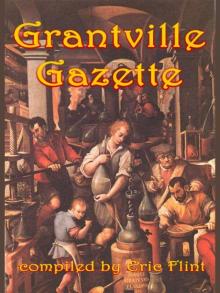 Grantville Gazette VI
Grantville Gazette VI 1812: The Rivers of War
1812: The Rivers of War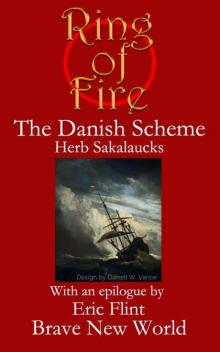 1633
1633 All the Plagues of Hell
All the Plagues of Hell Grantville Gazette, Volume 7
Grantville Gazette, Volume 7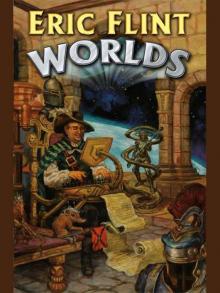 Worlds
Worlds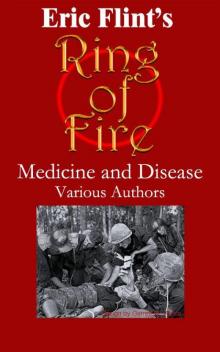 1632
1632 The Alexander Inheritance
The Alexander Inheritance Diamonds Are Forever
Diamonds Are Forever The Philosophical Strangler
The Philosophical Strangler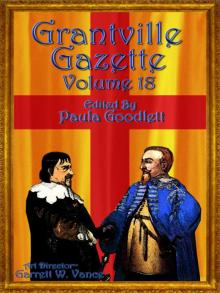 Grantville Gazette, Volume VIII
Grantville Gazette, Volume VIII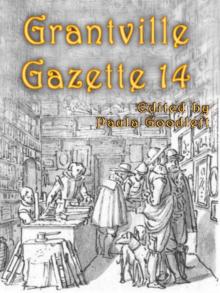 Grantville Gazette-Volume XIV
Grantville Gazette-Volume XIV Genie Out of the Bottle
Genie Out of the Bottle Pyramid Scheme
Pyramid Scheme 1636- the China Venture
1636- the China Venture Grantville Gazette, Volume XII
Grantville Gazette, Volume XII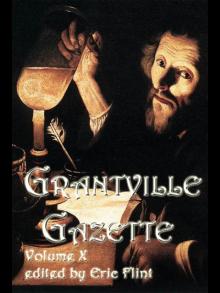 Grantville Gazette, Volume I
Grantville Gazette, Volume I The Demons of Constantinople
The Demons of Constantinople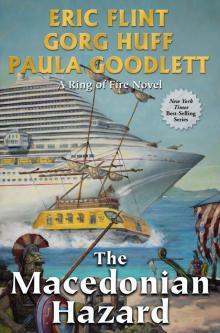 The Macedonian Hazard
The Macedonian Hazard 1634- the Galileo Affair
1634- the Galileo Affair The Shaman of Karres
The Shaman of Karres 1636: The Ottoman Onslaught
1636: The Ottoman Onslaught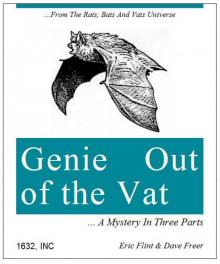 The Genie Out of the Vat
The Genie Out of the Vat The Grantville Gazette Volumn II
The Grantville Gazette Volumn II 1636: The Saxon Uprising
1636: The Saxon Uprising 1634 The Baltic War
1634 The Baltic War 1636: Mission to the Mughals
1636: Mission to the Mughals !632: Joseph Hanauer
!632: Joseph Hanauer Grantville Gazette-Volume XI
Grantville Gazette-Volume XI 1637: The Peacock Throne
1637: The Peacock Throne 1636: The China Venture
1636: The China Venture The Rats, the Bats & the Ugly
The Rats, the Bats & the Ugly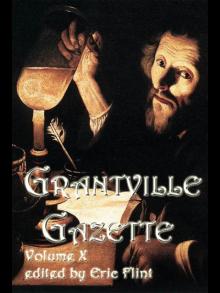 Grantville Gazette, Volume X
Grantville Gazette, Volume X The Course of Empire
The Course of Empire Pyramid Power
Pyramid Power 1636: The Devil's Opera
1636: The Devil's Opera Ring of Fire IV
Ring of Fire IV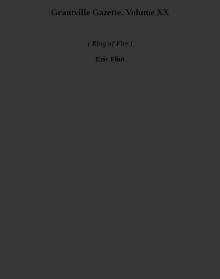 Grantville Gazette. Volume XX (ring of fire)
Grantville Gazette. Volume XX (ring of fire) 1634: The Baltic War (assiti chards)
1634: The Baltic War (assiti chards) The tide of victory b-5
The tide of victory b-5 1634: The Ram Rebellion
1634: The Ram Rebellion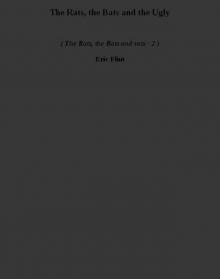 The Rats, the Bats and the Ugly trtbav-2
The Rats, the Bats and the Ugly trtbav-2 Castaway Resolution
Castaway Resolution Council of Fire
Council of Fire Slow Train to Arcturus
Slow Train to Arcturus 1637_The Volga Rules
1637_The Volga Rules Boundary b-1
Boundary b-1 1637: No Peace Beyond the Line
1637: No Peace Beyond the Line The Sorceress of Karres
The Sorceress of Karres Destiny's shield b-3
Destiny's shield b-3 In the Heart of Darkness b-2
In the Heart of Darkness b-2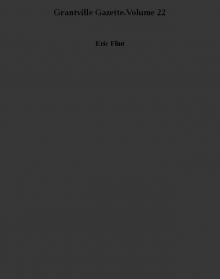 Grantville Gazette.Volume 22
Grantville Gazette.Volume 22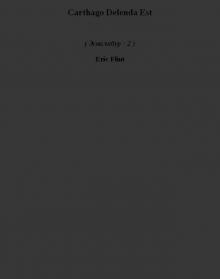 Carthago Delenda Est э-2
Carthago Delenda Est э-2 1635: The Eastern Front (assiti shards)
1635: The Eastern Front (assiti shards) 1812-The Rivers of War
1812-The Rivers of War The Dance of Time b-6
The Dance of Time b-6 Belisarius II-Storm at Noontide
Belisarius II-Storm at Noontide Iron Angels
Iron Angels 1636:The Saxon Uprising as-11
1636:The Saxon Uprising as-11 1812: The Rivers of War tog-1
1812: The Rivers of War tog-1 Jim Baens Universe-Vol 1 Num 6
Jim Baens Universe-Vol 1 Num 6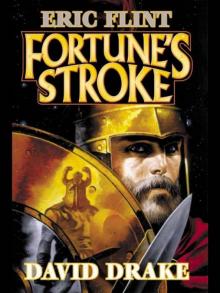 Fortune's stroke b-4
Fortune's stroke b-4 1637 The Polish Maelstrom
1637 The Polish Maelstrom The Shadow of the Lion hoa-1
The Shadow of the Lion hoa-1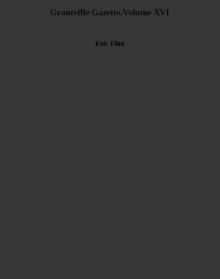 Grantville Gazette.Volume XVI
Grantville Gazette.Volume XVI 1636:The Kremlin games rof-14
1636:The Kremlin games rof-14 1824: The Arkansas War tog-2
1824: The Arkansas War tog-2 Time spike
Time spike Jim Baen's Universe-Vol 2 Num 1
Jim Baen's Universe-Vol 2 Num 1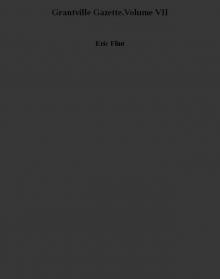 Grantville Gazette.Volume VII
Grantville Gazette.Volume VII 1634: The Ram Rebellion (assiti shards)
1634: The Ram Rebellion (assiti shards)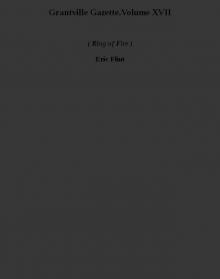 Grantville Gazette.Volume XVII (ring of fire)
Grantville Gazette.Volume XVII (ring of fire) Jim Baens Universe-Vol 2 Num 5
Jim Baens Universe-Vol 2 Num 5 1635: The Cannon Law (assiti shards)
1635: The Cannon Law (assiti shards)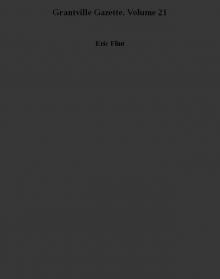 Grantville Gazette. Volume 21
Grantville Gazette. Volume 21 Rats, Bats and Vats rbav-1
Rats, Bats and Vats rbav-1 1636_The Vatican Sanction
1636_The Vatican Sanction The Aethers of Mars
The Aethers of Mars Jim Baen's Universe Volume 1 Number 5
Jim Baen's Universe Volume 1 Number 5 1634: The Bavarian Crisis (assiti chards)
1634: The Bavarian Crisis (assiti chards)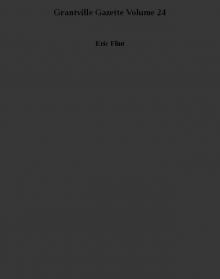 Grantville Gazette Volume 24
Grantville Gazette Volume 24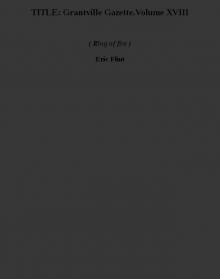 TITLE: Grantville Gazette.Volume XVIII (ring of fire)
TITLE: Grantville Gazette.Volume XVIII (ring of fire) Ring of fire II (assiti shards)
Ring of fire II (assiti shards) 1635:The Dreeson Incident (assiti shards)
1635:The Dreeson Incident (assiti shards) Jim Baen's Universe-Vol 2 Num 4
Jim Baen's Universe-Vol 2 Num 4 In the Heart of Darkness
In the Heart of Darkness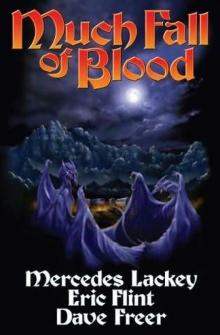 Much Fall Of Blood hoa-3
Much Fall Of Blood hoa-3